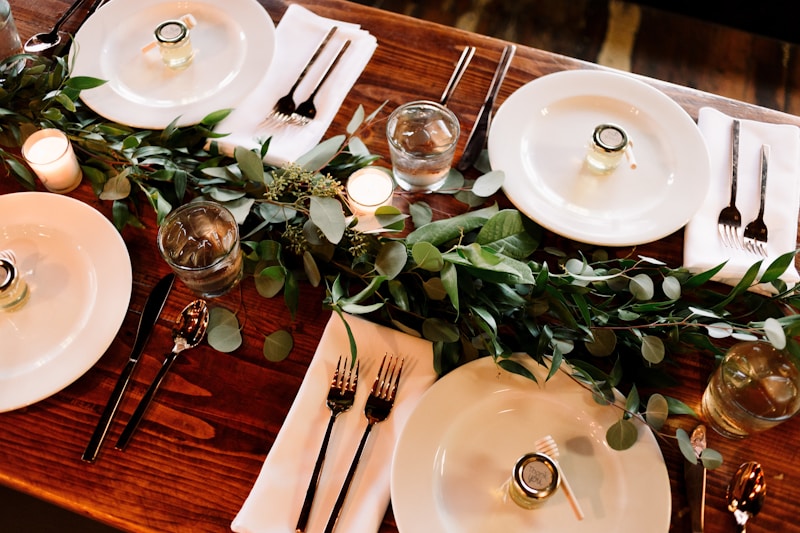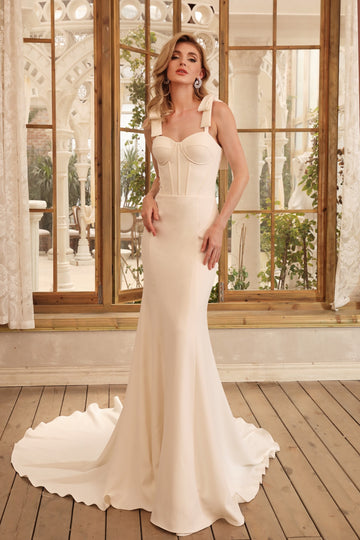Traditional vs. Contemporary Fabrics: A Wedding Dress Perspective
Traditional vs. Contemporary Fabrics: A Wedding Dress Perspective
The choice of fabric plays a pivotal role in the design and aesthetic of a wedding dress. In the world of bridal fashion, the debate between traditional and contemporary fabrics is ongoing, each offering unique attributes that appeal to different tastes and trends. This article will explore the nuances of traditional versus contemporary fabrics from a wedding dress perspective, highlighting their characteristics, advantages, disadvantages, and the effect these choices can have on the overall wedding experience.
Understanding Traditional Fabrics
Traditional fabrics have been the cornerstone of wedding dress designs for centuries. They often embody timeless elegance and are rooted in cultural significance. Here are some of the most popular traditional fabrics used in bridal wear:
| Fabric Type | Characteristics | Common Usage |
| Satin | Soft, luxurious, has a slight sheen | Classic ball gowns and formal dresses |
| Lace | Delicate, intricate patterns, transparent | Overlays, sleeves, and veils |
| Taffeta | Crisp, structured, and rustles | Structured silhouettes like A-line dresses |
| Chiffon | Lightweight, flowy, sheer | Soft overlays and ethereal designs |
The Allure of Traditional Fabrics
Many designers and brides are drawn to traditional fabrics due to their rich history and classic appeal. For instance, satin is often favored for its luxurious feel and beautiful drape, making it ideal for formal weddings. Lace, with its intricate detailing, adds a romantic touch and is a symbol of love and commitment.
Pros of Traditional Fabrics
- Timeless Elegance: Traditional fabrics like lace and satin never go out of style.
- Cultural Significance: Many cultures have specific fabrics tied to wedding traditions.
- Luxury: The rich textures and finishes of traditional fabrics exude luxury.
Cons of Traditional Fabrics
- Comfort: Some traditional fabrics might not be as breathable or comfortable for long-duration wear.
- Care: Fabrics like lace can be delicate and require special care during cleaning.
The Rise of Contemporary Fabrics
In recent years, there has been a paradigm shift towards contemporary fabrics, which often embrace innovative designs and modern technology. Here are some contemporary fabric options gaining popularity in wedding dress couture:
| Fabric Type | Characteristics | Common Usage |
| Silk Mikado | Heavyweight blend of silk and nylon, lustrous | Full-bodied gowns and structured designs |
| Crepe | Soft, stretchy, and drapes beautifully | Form-fitting and minimalist styles |
| Georgette | Lightweight, slightly crinkled texture | Flowy silhouettes and layered designs |
| Jersey | Elastic, comfortable, and form-fitting | Casual and modern bridal looks |
The Appeal of Contemporary Fabrics
Contemporary fabrics are celebrated for their versatility and innovative characteristics. For example, silk Mikado provides a regal look while ensuring ease of movement, which appeals to modern brides looking for both style and comfort. Additionally, the incorporation of jersey and crepe allows for a more relaxed silhouette, suitable for less formal weddings.
Pros of Contemporary Fabrics
- Comfort: Many contemporary fabrics are designed for comfort and ease of movement.
- Versatility: They can be adapted to various styles, from minimalist chic to extravagant designs.
- Innovative Designs: Modern fabrics allow for unique silhouettes that may not be achievable with traditional textiles.
Cons of Contemporary Fabrics
- Less Formality: Some contemporary fabrics may lack the traditional elegance associated with classic bridal wear.
- Durability: Certain lightweight fabrics may not hold up well over time or in varying weather conditions.
Choosing the Right Fabric for Your Wedding Dress
When deciding between traditional and contemporary fabrics for wedding dresses, consider several factors that will influence your choice:
1. Wedding Theme and Style
Your wedding's theme significantly impacts fabric selection. For a vintage or classic wedding, traditional fabrics may complement the overall aesthetic beautifully. However, if you're planning a modern, minimalist wedding, contemporary fabrics may be the better fit.
2. Personal Comfort
Wearing a wedding dress can mean spending hours in it. Therefore, comfort should never be overlooked. Opt for fabrics that feel good against your skin and allow movement, especially for longer ceremonies or receptions.
3. Venue and Season
The season and venue of your wedding can play a crucial role in your fabric choice. Lightweight fabrics like chiffon or georgette are excellent for summer outdoor ceremonies, while heavier options like satin or Mikado might be more appropriate for formal winter weddings.
4. Budget Considerations
Some traditional fabrics, particularly high-quality silks and laces, can be more expensive than contemporary materials. It's essential to balance your budget with your dream dress design when making fabric choices.

Conclusion
In the end, the choice between traditional and contemporary fabrics in wedding dresses is deeply personal and should reflect the bride's style, comfort, and wedding theme. While traditional fabrics bring timeless elegance and cultural significance, contemporary fabrics offer comfort and innovative design options. The key is to understand the unique attributes of each fabric and how they align with your vision for your special day.
Remember to bring swatches when trying on dresses, to get a true feel for how each fabric behaves. Whether you lean toward the classic or contemporary side, what matters most is that you feel beautiful and confident on your wedding day!
